Del Mar Photonics
Non-polarizing cube beam-splitters for near-IR range
request a quote for custom beam-splitter
50/50 non-polarizing cube beam-splitter from 1.5-5.0 um -
request a quote
Material CaF2
Cube: (a) 1.0 x 1.0 x 1.0 inch
Angle: +/-10 arc min
Scratch/Dig: 60/40
Surface Figure: 1 wave
Clear Aperture: 90%
Angle: +/-10 arc min
Scratch/Dig: 60/40
Coating: R/T is 50/50 +/-15% at 45 degree AOI on the
hypotenuse
AR coating on the entrance and exit surfaces.
50/50 non-polarizing cube beam-splitter from 1.5-5.0 um -
request a quote
Material CaF2
Cube: (b) 2.0 x 2.0 x 2.0 inch
Angle: +/-10 arc min
Scratch/Dig: 60/40
Surface Figure: 1 wave
Clear Aperture: 90%
Angle: +/-10 arc min
Scratch/Dig: 60/40
Coating: R/T is 50/50 +/-15% at 45 degree AOI on the
hypotenuse
AR coating on the entrance and exit surfaces.
Product news and updates - Training Workshops
- Featured Customer - Other News
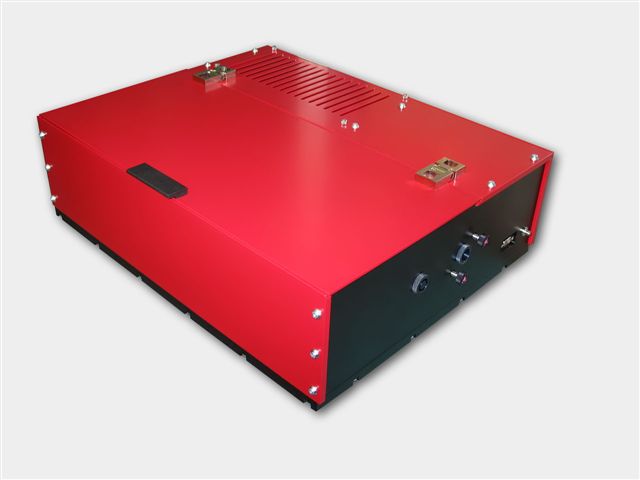 |
Trestles LH Ti:Sapphire
laser
Trestles LH is a new series of high quality femtosecond Ti:Sapphire
lasers for applications in scientific research, biological imaging, life
sciences and precision material processing. Trestles LH includes integrated
sealed, turn-key, cost-effective, diode-pumped
solid-state (DPSS). Trestles LH lasers offer the most attractive pricing
on the market combined with excellent performance and reliability. DPSS LH
is a state-of-the-art laser designed for today’s applications. It combines
superb performance and tremendous value for today’s market and has
numerous advantages over all other DPSS lasers suitable for Ti:Sapphire
pumping. Trestles LH can be customized to fit customer requirements and
budget. Reserve a
spot in our Femtosecond lasers training
workshop in San Diego, California. Come to learn how to build a
femtosecond laser from a kit
|
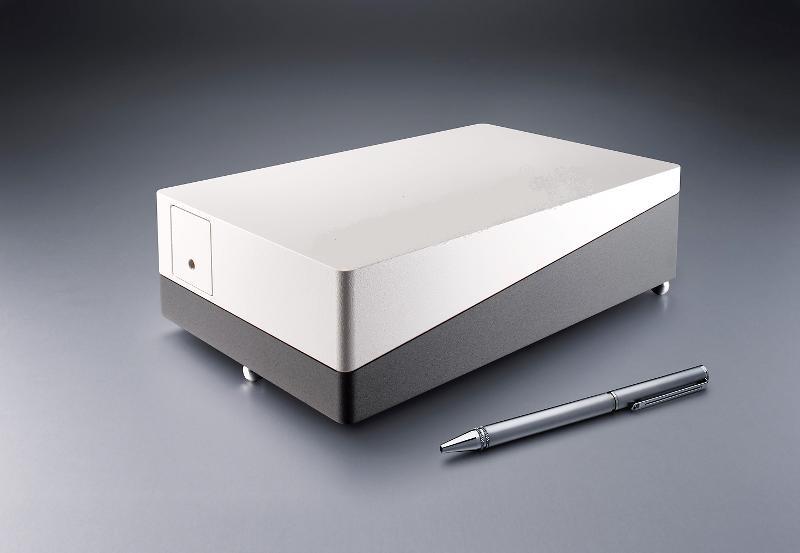 |
DPSS DMPLH lasers
DPSS DMP LH series lasers will pump your Ti:Sapphire laser.
There are LH series lasers installed all over the world pumping all makes & models
of oscillator. Anywhere from CEP-stabilized femtosecond Ti:Sapphire oscillators
to ultra-narrow-linewidth CW Ti:Sapphire oscillators. With up to 10 Watts CW
average power at 532nm in a TEMoo spatial mode, LH series
lasers has quickly proven itself
as the perfect DPSS pump laser for all types of Ti:Sapphire or dye laser.
Ideal for pumping of:
Trestles LH
Ti:Sapphire laser
T&D-scan laser
spectrometer based on narrow line CW Ti:Sapphire laser
|
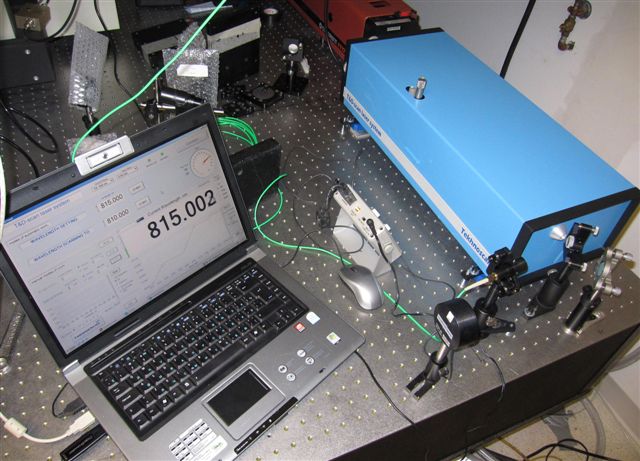 |
New laser spectrometer
T&D-scan for research that
demands high resolution and high spectral
density in UV-VIS-NIR spectral domains - now available with
new pump option!
The
T&D-scan
includes
a CW ultra-wide-tunable narrow-line laser, high-precision wavelength meter,
an electronic control unit driven through USB interface as well as a
software package. Novel advanced design of the fundamental laser component
implements efficient intra-cavity frequency doubling as well as provides a
state-of-the-art combined ultra-wide-tunable Ti:Sapphire & Dye laser
capable of covering together a
super-broad spectral range between 275 and 1100 nm. Wavelength
selection components as well as the position of the non-linear crystal are
precisely tuned by a closed-loop control
system, which incorporates highly accurate wavelength meter.Reserve a
spot in our CW lasers training
workshop in San Diego, California. Come to
learn how to build a
CW
Ti:Sapphire laser from a kit
|
 |
AOTF Infrared Spectrometer
Del Mar Photonics offer a handheld
infrared spectrometer based on the
acousto-optic tunable filter (AOTF). This instrument is about the size and
weight of a video camera, and can be battery operated. This unique, patented
device is all solid-state with no moving parts. It has been sold for a wide
variety of applications such as liquid fuel analysis, pharmaceutical analysis,
gas monitoring and
plastic analysis.
Miniature AOTF infrared spectrometer uses
a crystal of tellurium dioxide to scan the wavelength. Light from a light source enters
the crystal, and is diffracted into specific wavelengths. These wavelengths are
determined by the frequency of the electrical input to the crystal. Since there
are no moving parts, the wavelength scanning can be extremely fast. In addition,
specific wavelengths can be chosen by software according to the required algorithm, and therefore can be modified without changing the
hardware. After the infrared radiation reflects off of the sample, it is
converted into an electrical signal by the detector and analyzed by the
computer. Del Mar Photonics is looking for international distributors for
RAVEN - AOTF IR spectrometer for plastic identification and for variety of
scientific and industrial collaborations to explore futher commercial potential
of AOTF technology.
New:
AOTF spectrometer to measure lactose, fat and proteins in milk
|
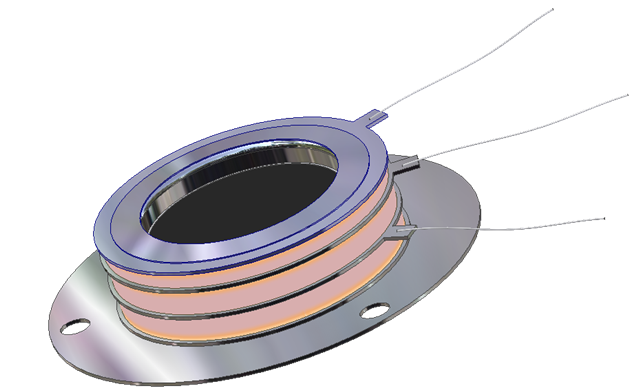 |
Open Microchannel Plate Detector
MCP-MA25/2 -
now in stock!
Microchannel Plate Detectors MCP-MA series are an open MCP detectors
with one or more microchannel plates and a single metal anode. They are intended
for time-resolved detection and make use of high-speed response properties of
the MCPs. MCP-MA detectors are designed for photons and particles detection in
vacuum chambers or in the space.
MCP-MA detectors are used in a variety of applications including UV, VUV and EUV
spectroscopy, atomic and molecular physics, TOF mass–spectrometry of clusters
and biomolecules, surface studies and space research.
MCP-MA detectors supplied as a totally assembled unit that can be easily mounted
on any support substrate or directly on a vacuum flange. They also can be
supplied premounted on a standard ConFlat flanges.
buy online -
ask for research discount!
|
 |
Hummingbird EMCCD camera
The digital Hummingbird
EMCCD camera combines high sensitivity, speed and high resolution.
It uses Texas Instruments' 1MegaPixel Frame Transfer Impactron device which
provides QE up to 65%.
Hummingbird comes with a standard CameraLink output.
It is the smallest and most rugged 1MP EMCCD camera in the world.
It is ideally suited for any low imaging application such as hyperspectral
imaging, X-ray imaging, Astronomy and low light surveillance.
It is small, lightweight, low power and is therefore the ideal camera for
OEM and integrators.
buy online |
 |
Hatteras-D
femtosecond transient absorption data acquisition system
Future nanostructures and biological nanosystems will take
advantage not only of the small dimensions of the objects but of the
specific way of interaction between nano-objects. The interactions
of building blocks within these nanosystems will be studied and optimized on
the
femtosecond time scale - says Sergey Egorov, President and CEO of Del Mar
Photonics, Inc. Thus we put a lot of our efforts and resources into the
development of new Ultrafast
Dynamics Tools such as our Femtosecond Transient Absorption Measurements
system Hatteras. Whether you want to
create a new photovoltaic system that will efficiently convert photon energy
in charge separation, or build a molecular complex that will dump photon energy
into local heat to kill cancer cells, or create a new fluorescent probe for
FRET microscopy, understanding of internal dynamics on femtosecond time scale
is utterly important and requires advanced measurement techniques.Reserve a
spot in our Ultrafast Dynamics Tools
training workshop in San Diego, California.
|
 |
Beacon Femtosecond Optically Gated Fluorescence Kinetic Measurement System
-
request a quote -
pdf
Beacon together with Trestles Ti:sapphire oscillator, second and third harmonic
generators. Femtosecond optical gating (FOG) method gives best temporal
resolution in light-induced fluorescence lifetime measurements. The resolution
is determined by a temporal width of femtosecond optical gate pulse and doesn't
depend on the detector response function. Sum frequency generation (also called
upconversion) in nonlinear optical crystal is used as a gating method in the
Beacon femtosecond fluorescence kinetic measurement system. We offer
Beacon-DX for operation together with Ti: sapphire femtosecond oscillators
and Beacon-DA for operation together with femtosecond amplified pulses.
Reserve a
spot in our Ultrafast Dynamics Tools
training workshop in San Diego, California.
|
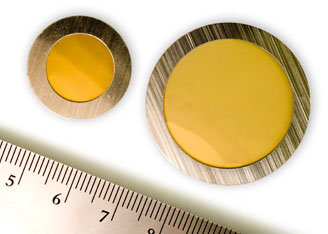 |
Terahertz systems, set ups and components
New band pass and long pass THz optical filters based on porous silicon and metal mesh technologies.
Band pass filters with center wavelengths from 30 THz into GHz range and transmissions up to 80% or better. Standard designs
with clear aperture diameters from 12.5 to 37.5 mm.
Long pass filters with standard rejection edge wavelengths from 60 THz into GHz range. Maximum transmission up to 80% or
better, standard designs at 19.0 and 25.4 mm diameters.
Excellent thermal (from cryogenic to 600 K) and mechanical properties
THz products:
THz Spectrometer kit with Antenna
THz transmission setup
THz time domain spectrometer Pacifica fs1060pca
THz time domain spectrometer Pacifica fs780pca
THz detectors: Golay cell and LiTaO3 piroelectric detectors
PCA - Photoconductive Antenna as THz photomixer
Pacifica THz Time Domain Spectrometer - Trestles Pacifica
Holographic Fourier Transform Spectrometer for THz Region
Wedge TiSapphire Multipass Amplifier System - THz pulses generation
Terahertz Spectroscopic Radar Mobile System for Detection of Concealed Explosives
Band pass filters with center wavelengths from 30 THz into GHz range
Long pass filters with standard rejection edge wavelengths from 60 THz into GHz range
Generation of THz radiation using lithium niobate
Terahertz crystals (THz): ZnTe, GaP, LiNbO3 - Wedge ZnTe
|
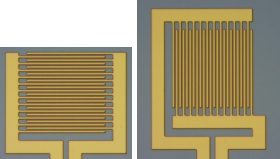 |
iPCA - interdigital Photoconductive Antenna for terahertz waves
Large area broadband antenna with lens array and high emitter conversion
efficiency
iPCA with LT-GaAs absorber, microlens array for laser excitation wavelengths
l £ 850
nm, adjusted hyperhemispherical silicon lens with a high power conversion
efficiency of 0.2 mW THz power / W optical power. The iPCA can be used also
as large area THz detector. The two types iPCAp and iPCAs have the same
active interdigital antenna area but different contact pad directions with
respect to the electrical THz field.
Interdigital Photoconductive Antenna for terahertz waves generation using
femtosecond Ti:Sapphire laser
THz books |
 |
IntraStage lowers the cost
of test data management!
Struggling with gigabytes or terabytes of test data?
IntraStage easily transforms test
data from disparate sources into web-based quality metrics and engineering
intelligence you can use.
Contact
us today to discuss your test management requirements and specifications of your
application.
|
Training Workshops
Featured Customer
 |
Trestles LH10-fs/CW laser system at UC Santa Cruz Center of
Nanoscale Optofluidics
Del
Mar Photonics offers new
Trestles fs/CW laser system which can be easily
switched from femtosecond mode to CW and back. Having both modes of operation in one system dramatically increase a
number of applications that the laser can be used for, and makes it an ideal
tool for scientific lab involved in multiple research projects.
Kaelyn Leake is a PhD student in Electrical Engineering. She graduated from
Sweet Briar College with a B.S. in Engineering Sciences and Physics. Her
research interests include development of nanoscale optofluidic devices and
their applications. Kaelyn is the recipient of a first-year QB3 Fellowship.
In this video Kaelyn talks about her experimental research in nanoscale
optofluidics to be done with Trestles LH laser.
Reserve a spot in our
femtosecond Ti:Sapphire training workshop in San
Diego, California during summer 2011 |
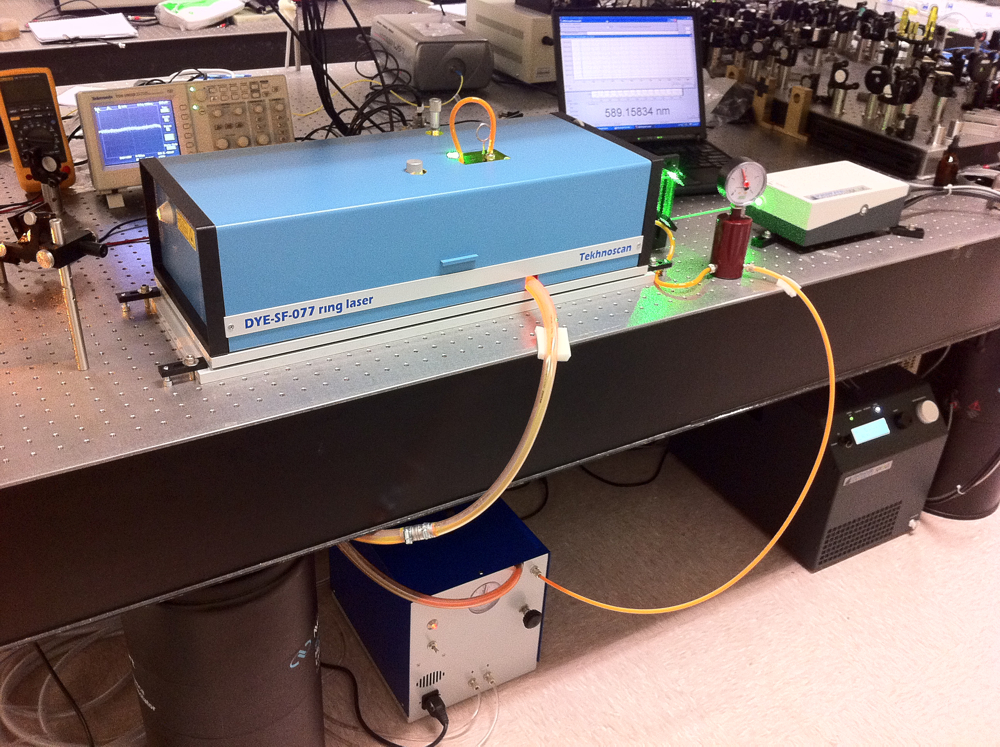 |
Frequency-stabilized CW
single-frequency ring Dye laser DYE-SF-007 pumped by DPSS DMPLH laser installed
in the brand new group of Dr. Dajun Wang at the The Chinese University of Hong
Kong.
DYE-SF-077 features exceptionally narrow generation line width, which
amounts to less than 100 kHz. DYE-SF-077 sets new standard for generation
line width of commercial lasers. Prior to this model, the narrowest line-width
of commercial dye lasers was as broad as 500 kHz - 1 MHz. It is necessary to
note that the 100-kHz line-width is achieved in DYE-SF-077 without the use of an
acousto-optical modulator, which, as a rule, complicates the design and
introduces additional losses. A specially designed ultra-fast PZT is used for
efficient suppression of radiation frequency fluctuations in a broad frequency
range. DYE-SF-077 will be used in resaerch of Ultracold polar molecules,
Bose-Einstein condensate and quantum degenerate Fermi gas and High resolution
spectroscopy |
Other News
Optical Society of Southern California meeting at UCSD OSSC 2011-04-27
Nd:YAG laser ordered by the University of Leon, UANL, Mexico
Wedge 50 Multipass Amplifier pumped with a Darwin-527-30-M DPSS Laser
ordered by Hong Kong customer
New
Trestles LH10-fs/CW femtosecond+CW laser ready for delivery to the
University of California Santa Cruz
Trestles femtosecond
Ti:Sapphire laser delivered to North Carolina State
University
Del Mar Photonics sponsor IONS (International OSA Network of Students)
conference IONS-NA-2 in Tucson, Arizona
IONS-NA-2
website
Best talk and best
poster awards at IONS-Moscow 2010 conference sponsored by Del Mar Photonics
Watch Del Mar Photonics
videos!
Del Mar Photonics is now on Twitter!
Del Mar Photonics featured components
Del Mar Photonics continuously expands its components
portfolio.
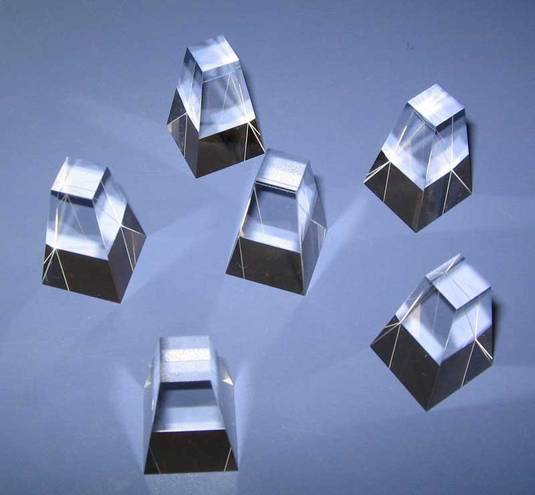
|
Solar
Prisms for Concentrating Photovoltaic Systems (CPV)
Solar cells made of compound semiconductors such
as gallium arsenide are very expensive. Usually very small cells are
installed and various means such as mirrors, lenses, prisms, etc..are used
to concentrate sunlight on the cells. Concentration photovoltaic technology
(CPV) uses the solar radiation with an efficiency of 40%, double that of
conventional solar cells
Del Mar Photonics design custom Concentrating Photovoltaic Systems (CPV) and
supply variety of the optical components for CPV such as
solar prisms shown in the picture.
hexagonal light pipes,
optical rods |
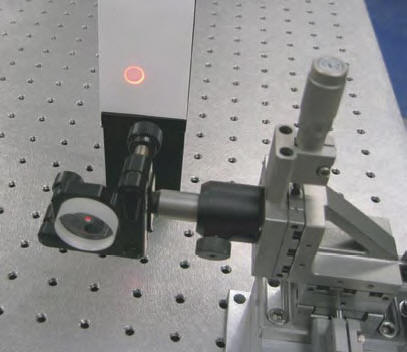
|
Axicon Lens
Axicon lens also known as conical lens or rotationally symmetric prism is
widely used in different scientific research and application. Axicon can be
used to convert a parallel laser beam into a ring, to create a non
diffractive Bessel beam or to focus a parallel beam into long focus depth.
Del Mar Photonics supplies axicons with cone angles range from 130° to
179.5° for use with virtually any laser radiation. We manufacture and supply
axicons made from BK7 glass, fused silica and other materials.
download brochure -
request a quote |
 |
Rutile (TiO2) coupling
prisms
Del Mar Photonics offers optical elements made of high quality synthetically
grown Rutile Titanium Dioxide crystals. Rutile’s strong birefringency, wide
transmission range and good mechanical properties make it suitable for
fabrication of polarizing cubes, prisms and optical isolators. Boules having
high optical transmission and homogeneity are grown by proprietary method.
Typical boules have 10 - 15 mm in dia. and up to 25 mm length. Optical
elements sizes - from 2 x 2 x 1 mm to 12.7 x 12.7 x 12.7 mm. Laser grade
polish quality is available for finished elements. So far we the largest
elements that we manufactured are 12 x15 x 5 mm, in which optical axis is
parallel to 15 mm edge, 5 mm is along beam path, 12 x 15 mm faces polished
20/10 S/D, one wave flatness, parallelism < 3 arc.min. (better specs.
available on request).
more details -
download brochure -
request a quote |
 |
Vacuum viewport
Del Mar Photonics offer a range of competitively priced UHV viewports ,
Conflat, ISO or KF including a variety of coatings to enhance performance.
Del Mar Photonics viewports are manufactured using advanced techniques for
control of special and critical processes, including 100 percent helium leak
testing and x-ray measurements for metallization control. Windows Materials
include: Fused silica, Quartz , Sapphire , MgF2, BaF2, CaF2, ZnSe, ZnS, Ge,
Si, Pyrex. Standard Viewing diameters from .55" to 1.94 ".
Coating - a range of custom coatings can applied - which include
- Single QWOT
- Broad Band AR
- V coatings
- ITO
- DLC (Diamond like coating)
more
details -
request a
quote
|
 |
Hydrogen
Thyratrons are used in
such devices as radars with different power levels, high-power pulsed
technical, electrophysical, medical devices and lasers. Sophisticated
design and high quality ceramic-metal envelope determines long lifetime
and very accurate and reliable operation of hydrogen thyratrons under wide range of environmental
conditions.
Applications:
- radars
- pulsed lasers power supplies
- medical apparatus
- electrophysical instrumentation
Triggered Three-Electrode Spark Gap Switches are ceramic-metal sealed off gas
discharge trigatron-type devices with a co-axial trigger electrode. These Gas
Discharge Tubes contain no mercury and, due to an advanced design, feature high
reliability and a long lifetime being operating under wide range of
environmental conditions.
Applications:
- pulsed installation for processing materials
- installations with plasma focus
- pulse power supplies for lasers and other pulse equipment
- medical apparatus such as lithotriptors and defibrillators
- processing systems for petroleum wells |
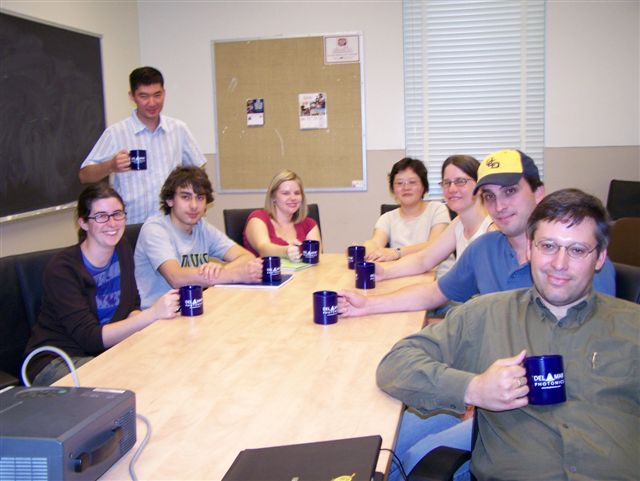 |
We are looking forward to hear from you and help you with
your optical and crystal components requirements. Need time to think about
it?
Drop us a line and we'll send you beautiful Del Mar Photonics mug (or
two) so you can have a tea party with your colleagues and discuss your
potential needs. |

Del Mar Photonics, Inc.
4119 Twilight Ridge
San Diego, CA 92130
tel: (858) 876-3133
fax: (858) 630-2376
Skype: delmarphotonics
sales@dmphotonics.com
CIE division scheme
The International Commission on Illumination (CIE) recommended the
division of infrared radiation into the following three bands:[5]
IR-A: 700 nm–1400 nm (0.7 µm – 1.4 µm)
IR-B: 1400 nm–3000 nm (1.4 µm – 3 µm)
IR-C: 3000 nm–1 mm (3 µm – 1000 µm)
A commonly used sub-division scheme is:[6]
Near-infrared (NIR, IR-A DIN): 0.75-1.4 µm in wavelength, defined by the water
absorption, and commonly used in fiber optic telecommunication because of low
attenuation losses in the SiO2 glass (silica) medium. Image intensifiers are
sensitive to this area of the spectrum. Examples include night vision devices
such as night vision goggles.
Short-wavelength infrared (SWIR, IR-B DIN): 1.4-3 µm, water absorption increases
significantly at 1,450 nm. The 1,530 to 1,560 nm range is the dominant spectral
region for long-distance telecommunications.
Mid-wavelength infrared (MWIR, IR-C DIN) also called intermediate infrared
(IIR): 3-8 µm. In guided missile technology the 3-5 µm portion of this band is
the atmospheric window in which the homing heads of passive IR 'heat seeking'
missiles are designed to work, homing on to the IR signature of the target
aircraft, typically the jet engine exhaust plume.
Long-wavelength infrared (LWIR, IR-C DIN): 8–15 µm. This is the "thermal
imaging" region, in which sensors can obtain a completely passive picture of the
outside world based on thermal emissions only and requiring no external light or
thermal source such as the sun, moon or infrared illuminator. Forward-looking
infrared (FLIR) systems use this area of the spectrum. Sometimes also called the
"far infrared."
Far infrared (FIR): 15 - 1,000 µm (see also far infrared laser).
NIR and SWIR is sometimes called "reflected infrared" while MWIR and LWIR is
sometimes referred to as "thermal infrared." Due to the nature of the blackbody
radiation curves, typical 'hot' objects, such as exhaust pipes, often appear
brighter in the MW compared to the same object viewed in the LW.
Del Mar Photonics -
Greyhawkoptics -
Infrared Optics from Del Mar Photonics
Infrared Technology: Applications to Electro-Optics, Photonic
Devices and Sensors
A. R. Jha
A complete reference guide to the theory, design, and applications of
infrared technology
Rapid advances in infrared (IR), photonic, and electrooptic technologies have
given rise to sophisticated sensors with important commercial, industrial, and
military applications-from remote sensing, surveillance, and high-resolution TV
to home security systems. This book provides scientists and engineers with a
comprehensive, state-of-the-art guide to the analysis and development of IR,
photonic, and electrooptical devices and systems for specific applications.
Well-known industry expert A. R. Jha compiles and consolidates the latest data
on IR sources and systems, presenting fully referenced technical information
plus numerical examples illustrating performance parameters and design aspects
for an amazingly broad array of applications. Basic IR theory is also provided.
Coverage includes:
* Transmission characteristics of optical signals through the atmosphere,
including effects of scattering, absorption, turbulence, and diffraction
* Performance characteristics and capabilities of various IR sources, including
state-of-the-art laser technologies
* Performance capabilities of IR detectors and focal planar arrays (FPAs) as
well as passive and active IR and electronic devices
* Potential and existing applications in such diverse fields as medicine,
telecommunications, space research, missile systems, and defense IR signature
analysis and measurement techniques
From the Back Cover
A complete reference guide to the theory, design, and applications of infrared
technology
Rapid advances in infrared (IR), photonic, and electrooptic technologies have
given rise to sophisticated sensors with important commercial, industrial, and
military applications–from remote sensing, surveillance, and high-resolution TV
to home security systems. This book provides scientists and engineers with a
comprehensive, state-of-the-art guide to the analysis and development of IR,
photonic, and electrooptical devices and systems for specific applications.
Well-known industry expert A. R. Jha compiles and consolidates the latest data
on IR sources and systems, presenting fully referenced technical information
plus numerical examples illustrating performance parameters and design aspects
for an amazingly broad array of applications. Basic IR theory is also provided.
Coverage includes:
* Transmission characteristics of optical signals through the atmosphere,
including effects of scattering, absorption, turbulence, and diffraction
* Performance characteristics and capabilities of various IR sources, including
state-of-the-art laser technologies
* Performance capabilities of IR detectors and focal planar arrays (FPAs) as
well as passive and active IR and electronic devices
* Potential and existing applications in such diverse fields as medicine,
telecommunications, space research, missile systems, and defense
IR signature analysis and measurement techniques
Key Phrases - Statistically Improbable Phrases (SIPs): (learn more)
absorption region thickness, electrooptic technology, optical commutator,
detection range capability, radiance contrast, various jet engines, pump beam
diameter, using optical technology, domain detectors, peak radiation wavelength,
most critical performance parameter, spectral radiant exitance, high mechanical
integrity, precision weapon delivery, photonic sensors, critical performance
parameters, thermal blooming, peak radiation intensity, severe operating
environments, radiance level, critical performance requirements, optic size,
high detection probability, afterburner operation, spectral radiant emittance
Key Phrases - Capitalized Phrases (CAPs): (learn more)
Laser Focus World, Photonics Spectra, The Infrared Handbook, Commercial
Engineering, Electro-Optics Handbook, Newport Corp, Aerosol Clear Hazy Height,
Halogen Osram, New York, Optoelectronics World, Unit Symbol Notes, Applied
Optics, Superconductor Technology, Technical Report
Infrared Detectors and Systems (Wiley Series in Pure and
Applied Optics)
E. L. Dereniak (Author), G. D. Boreman (Author)
Product Description
This text covers the range of subjects necessary for the understanding of modern
infrared-imaging systems at a level appropriate for seniors or first-year
graduate students in physics or electrical engineering. The first six chapters
focus on fundamental background issues of radiation detection, beginning with
the basics of geometrical optics and finishing with a discussion of the figures
of merit used for describing the signal-to-noise performance of a detector
system. Other topics include radiometry and flux-transfer issues, basic
radiation-detector mechanisms, and random-process mathematics.
The presentation then moves on to specific detector technologies and the
fundamental mechanisms of detection, paying special attention to responsivity
and noise performance. Devices discussed include photovoltaic detectors,
photoconductive detectors, thermal detectors, Schottky-barrier diodes, and
bandgap-engineered photodetectors via multiple quantum wells and superlattices.
The book concludes with a close look at infrared detection systems and related
issues. In the discussion of infrared search systems, the range equation is
developed in terms of the optical and detector parameters of the system. A
separate chapter is devoted to modulation transfer function, a
spatial-frequency-domain description of image quality. The final chapter
describes the design equations for thermal-imager systems in terms of
noise-equivalent temperature difference and minimum resolvable temperature.
Supported and clarified by 470 illustrations and accompanied by an extensive
glossary of the nomenclature, this is an excellent text for graduate and senior
level courses in radiometry and infrared detectors. It is also a valuable
reference for practicing engineers involved in the use, design, analysis, and
testing of infrared detector-based systems.
Infrared Detectors and Systems is a complete, accessible, and timely exposition
of a technology whose applications are increasingly important and widespread.
Based on courses presented by two of the field's leading figures, this book
provides extensive coverage of the background and fundamentals of radiation
detection and goes on to examine specific technologies and systems in depth and,
in some cases, for the first time in print.
Technologies discussed include
* Photovoltaic detectors
* Photoconductive detectors
* Thermal detectors
* Schottky-barrier diodes
* Bandgap-engineered photodetectors via multiple quantum wells and superlattices
Supplemented with 470 illustrations and a complete glossary of the nomenclature,
this is the ideal text for senior- and graduate-level courses in radiometry and
optical detection.
From the Publisher
Two acknowledged authorities in the field describe the optical detection process
and electronics involved in mimicking the eye. Provides a detailed overview of
optical sensors and systems, remote sensing, superlattices, and the electrical
characteristics of various detectors. Covers recent research in new detector
materials and advances in cutting-edge optical detectors.
Key Phrases - Statistically Improbable Phrases (SIPs): (learn more)
photon exitance, blackbody responsivity, blackbody exitance, optical radiation
incident, superconducting transition region, background irradiance, external
transmittance, optically active area, fixed frame time, photon radiance, readout
region, detector resistance, mirror membrane, staring system, spectral exitance,
voltage responsivity, photoconductive gain, current responsivity, extrinsic
photoconductors, afocal telescope, photon irradiance, nonideality factor,
photovoltaic detector, normalized detectivity, superconducting bolometer
Key Phrases - Capitalized Phrases (CAPs): (learn more)
New York, Academic Press, Infrared Physics, Elements of Infrared Technology,
Optical Engineering Press, The Infrared Handbook, Quantum-Well Infrared
Photodetectors, Englewood Cliffs, Infrared System Engineering, John Wiley,
Modern Optical Engineering, Prentice Hall, Wien Displacement Law, Milestone
Series, Modern Physics, Oxford University Press, Physics of Semiconductor
Devices, Bell Syst, Electron Devices, Epitaxial Multilayers, Infrared Design,
Infrared Technology Fundamentals, Optical Radiation Measurements, Quantum Well
Infrared Photodetectors, Solid State Electronic Devices
Need infrared optics?
Send us
your inquiry for custom quote!
or check our online store

Del Mar Photonics, Inc.
4119 Twilight Ridge
San Diego, CA 92130
tel: (858) 876-3133
fax: (858) 630-2376
Skype: delmarphotonics
sales@dmphotonics.com
















